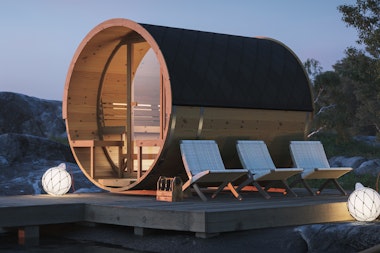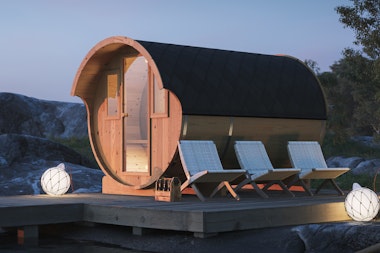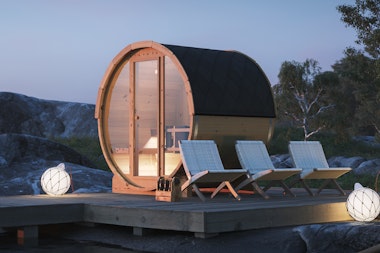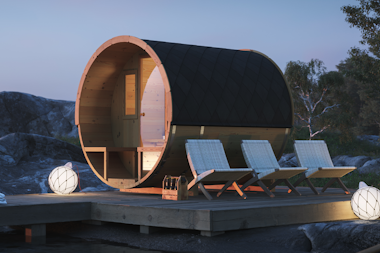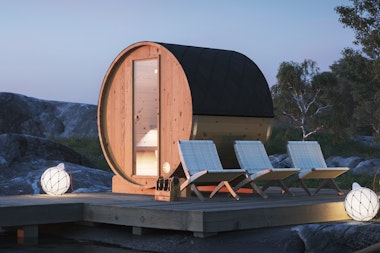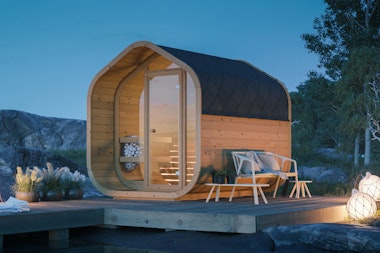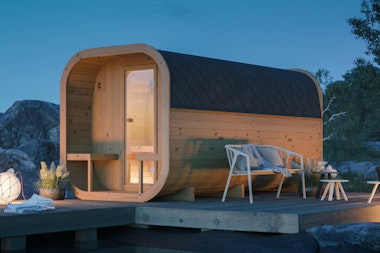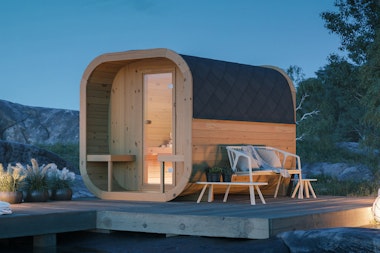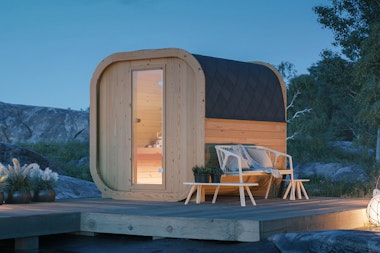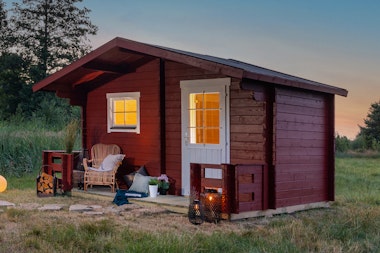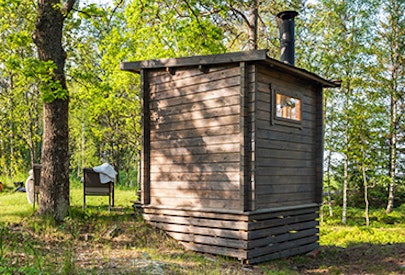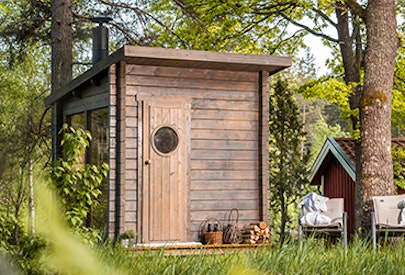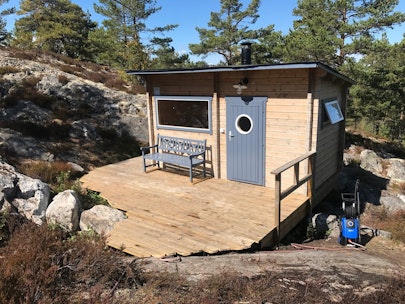
Sauna cabins, more than just wood
Mikael Nilsson / 2 min reading / Sauna
Wood is a fantastic building material, which can be used in many different ways. All types of wood have a different appearance and different properties. When building a sauna, the right choice of wood is crucial - it needs to be one which can withstand heat and feels cool against the skin. In a sauna, the wood you use shouldn't absorb too much heat.
It needs to look good as well, of course, but when it comes to the benches, the sauna's seating area, function is most important. There you should definitely choose knot-free wood that doesn't get too hot. The type of panels on the walls is not as critical. You can use the same type of wood, or you can switch to another. On the panels, avoiding knots is partly a matter of taste. It's undoubtedly more stylish without them, but knots where you can see the resin has flowed out have a certain charm of their own.
Aspen is a light wood that's perfect for a sauna and that's probably why it's the most popular wood. It works well for both the benches and the walls. However, because it's so bright, it's more sensitive to dirt. You can oil the wood, making the colour deeper, and the surface then becomes more durable. You can also use heat-treated aspen for your sauna. This treatment also darkens the wood and increases its lifespan. The wood is heated in an oxygen-free chamber to a temperature of 200 degrees Celsius (392 degrees Fahrenheit). This causes the material to artificially age. Its resistance to rot and fungus increases, while the resin in the wood disappears.
Alder is slightly reddish and naturally darker than untreated aspen, but lighter than heat-treated. The alder will also last longer if it's oiled, and, just like aspen, it can be sanded to give an as-new condition. Along with aspen and alder, ash is probably the most common type of wood for saunas. It's a darker type of wood that's popular in sauna cabins because it provides a feeling of luxury.
Spruce and pine may not be as exclusive as alder, as they are found everywhere, but they also work well in a sauna. For the benches, however, spruce should be avoided because the knots in it can release resin and it's practically impossible to find knot-free spruce.
Other types of exotic wood include cedar, abachi and Monterey pine. These are definitely more expensive than wood from Swedish trees, but since not much material is needed for in a sauna, if you want to add an extra cost, you might choose to have fancy wood. However, a more traditional sauna with aspen furnishings is both stylish and practical.
The best way to get started - our guide!

The best way to get started - our guide!
The assembly guide contains valuable tips and advice from our construction experts. A good base and a manual for those who plan to assemble the house themselves. We walk you through what’s important to consider before starting construction, the foundation options our experts recommend, and how the assembly works.
Read all about this and much more in our guide. We will send the assembly guide free of charge to your email. Good luck with your project!


